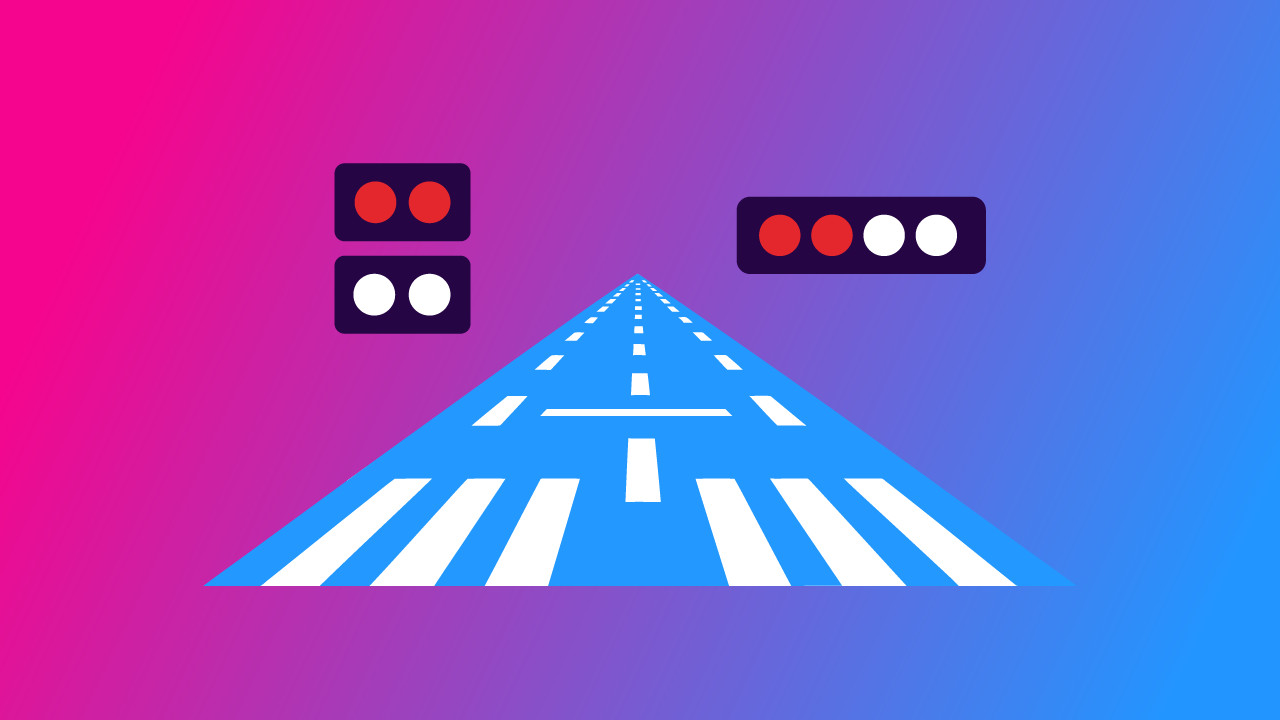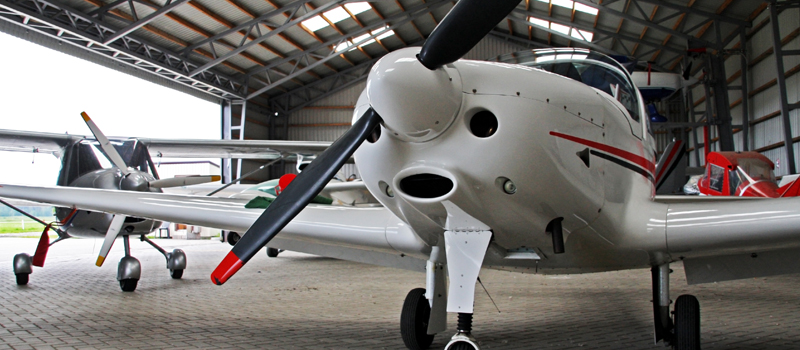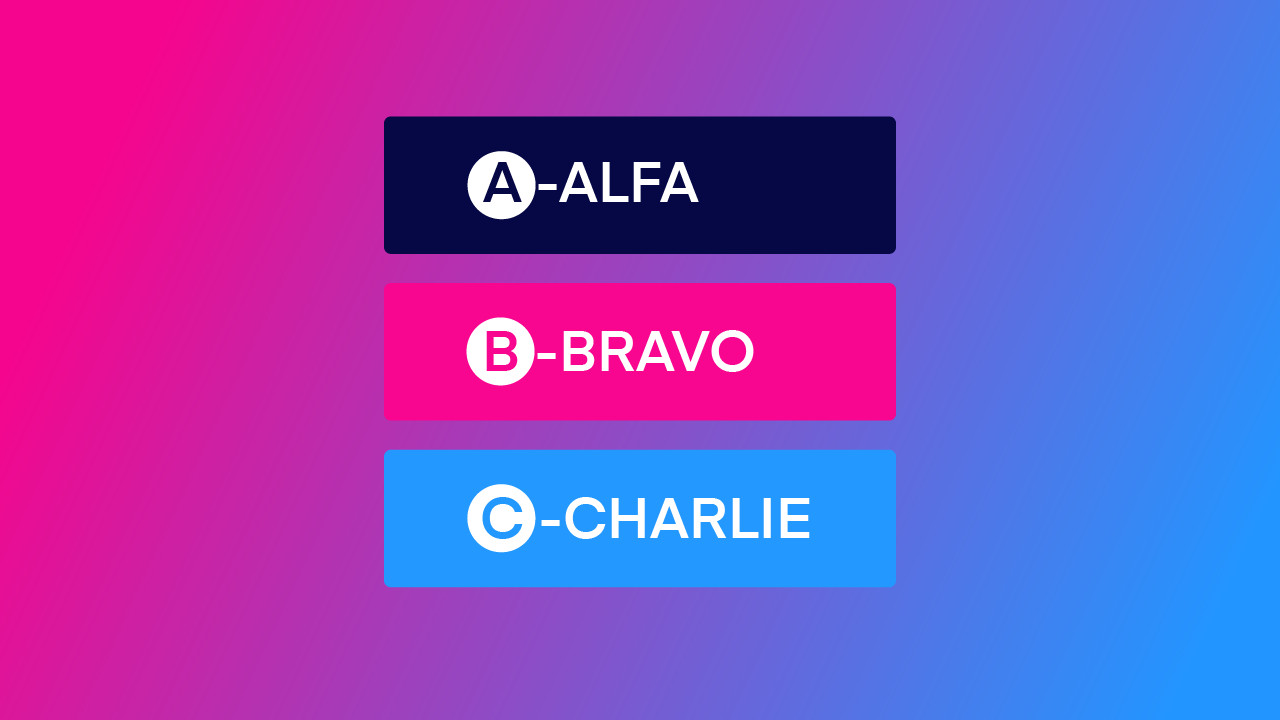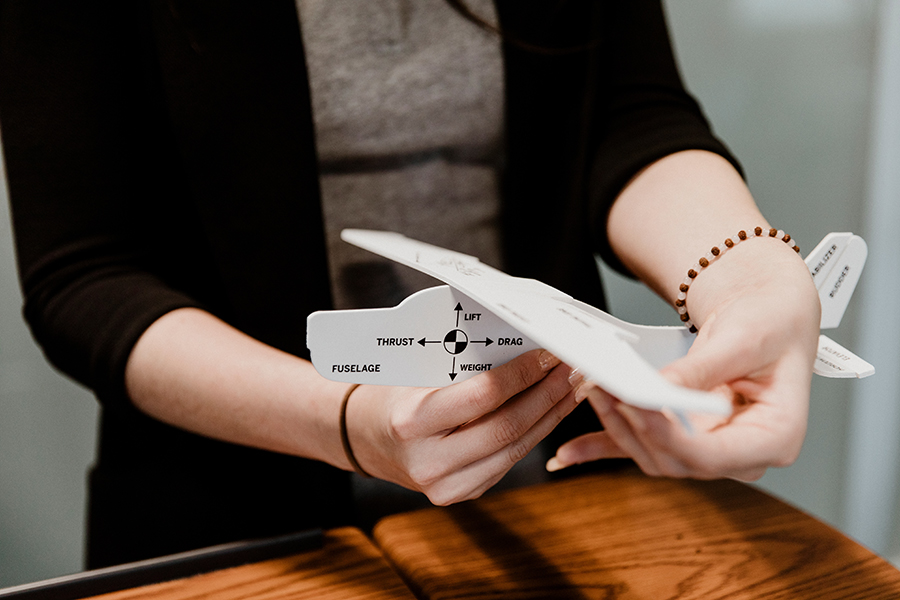Performing a safe landing requires skillful flying and clear visual guidance.
That’s where VASI and PAPI lights come in. They are the Visual Approach Slope Indicator and Precision Approach Path Indicator.
These systems are designed to help you stay on the correct glide path as you approach the runway.
VASI and PAPI each have their own approach. Knowing their differences can significantly impact your landing.
In this article, you will learn how these systems work and what makes them different. This will help you use these tools during your landing.
Let’s start!
Key Takeaways
- VASI is simpler and cost-effective, often used at smaller airports for basic guidance during landings.
- PAPI provides more precise guidance, which is ideal for busy airports and larger aircraft handling complex approaches.
- Both systems ensure correct glide path angles, improving landing safety, especially in poor visibility.
- VASI suits smaller, varied glide paths, while PAPI is preferred for precision at high-traffic, obstacle-heavy airports.
What Is VASI?
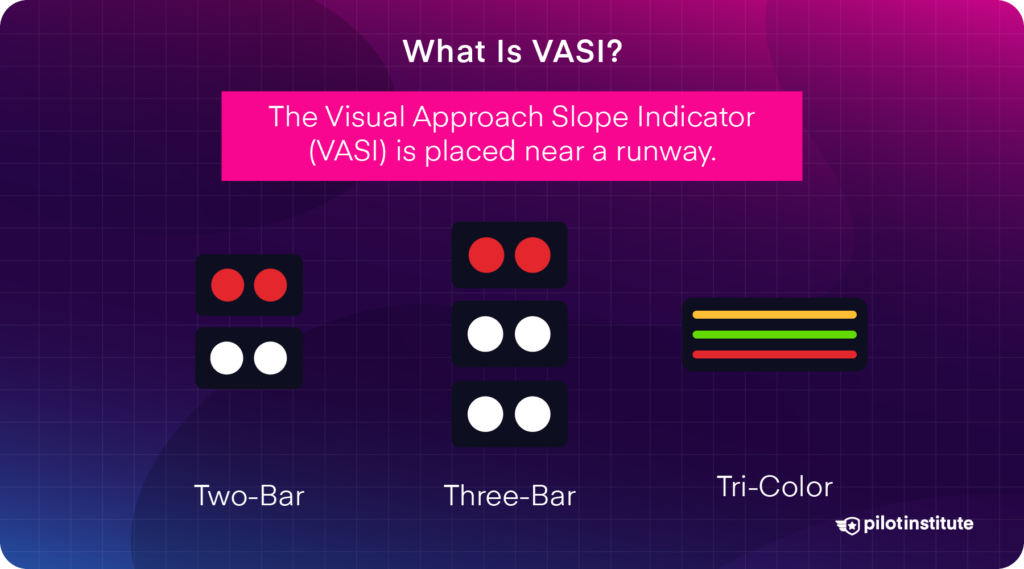
The Visual Approach Slope Indicator (VASI) is a Visual Glide Slope Indicator (VGSI) placed near a runway to help you land safely.
This system of lights is visible from 3-5 miles during the day and 20 miles at night. Using the VASI is crucial as it gives you safe obstruction clearance within 10 degrees of either side of the runway centerline and around four nautical miles from the runway threshold.
There are many types of VASI, including:
- Two-Bar
- Three-Bar
- Tri-Color
So, how do each one work?
Two-Bar VASI
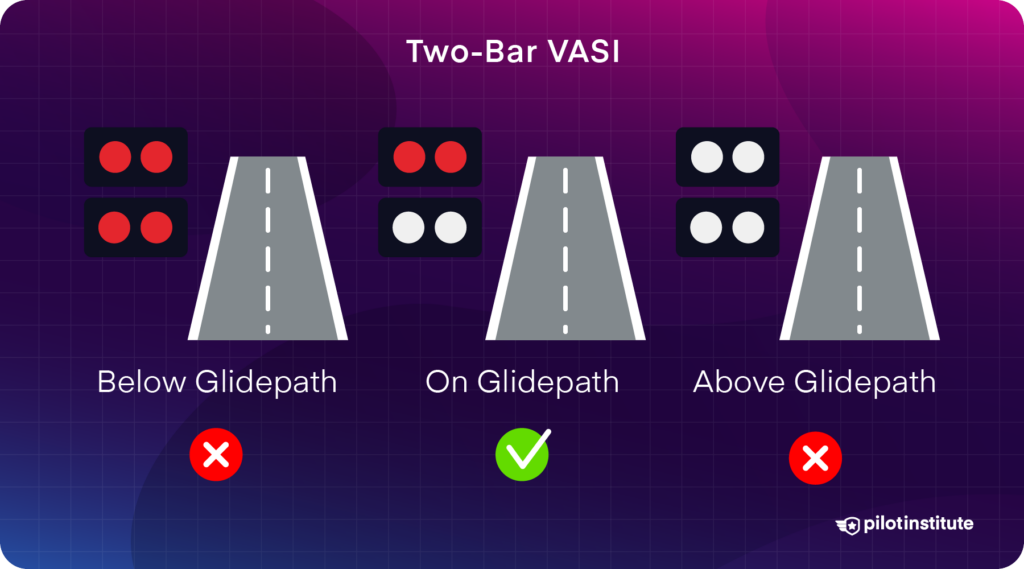
As the name suggests, the two-bar VASI uses two sets of lights placed alongside the runway. Depending on your height, these lights can flash either red or white.
When a bar is showing red, it means that you will touch down before passing its spot on the runway. On the other hand, when a bar is showing white, you will touch down after passing its spot on the runway.
As a result, when bars are placed on the far and near edges of the touchdown zone, they can guide you right in between where they’re placed, just within the touchdown zone.
How will this work in action? Let’s visualize each possible scenario:
- If you see two white bars, you’re too high. You will touch down after passing both bars and beyond the touchdown zone.
- If the far bar is red and the near bar is white, you are on the proper glide path. You will touch down after the near bar and before the far bar, placing you right within the touchdown zone.
- If you see two red bars, you’re too low. You will touch down before passing both bars and before the touchdown zone.
A handy phrase to remember is “Red over white, you’re all right.”
However, not all types of aircraft are meant to take the same approach path. The visual glide path of a two-bar VASI is set at 3 degrees. This makes the two-bar VASI generally only applicable to small and medium-sized aircraft, with little guidance for large aircraft.
Three-Bar VASI
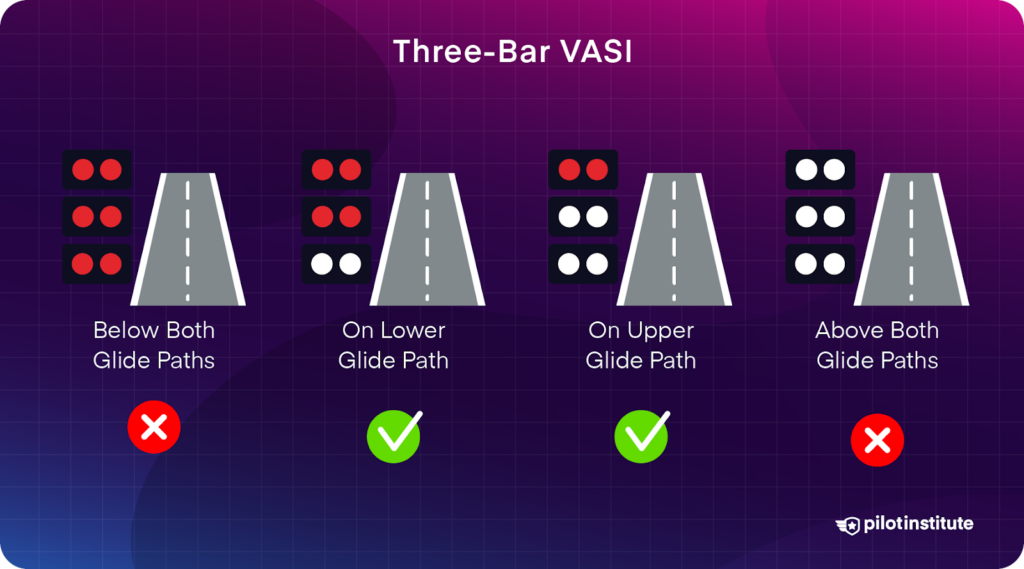
To help you when flying long-bodied airplanes, like the Boeing 747 or the McDonnell Douglas MD-11, some airports use the three-bar VASI.
A VASI shows how far your eyes are from the correct approach path, not the wheels. In a long aircraft, the wheels are further behind and lower than your eyes, so you must follow a slightly higher path to ensure the wheels properly clear the runway.
The extra set of lights on the three-bar VASI, placed further along the runway, helps you do this.
If you’re flying a large aircraft, you should use the far and middle bars and ignore the near bar. When your eyes are on the proper slope for a long-bodied airplane, you’ll see the top bar red, the middle bar white, and ignore the lower bar, which is also white.
If you’re flying a smaller aircraft, just focus on the middle and near bars and use them like a two-bar VASI.
The lower glide path provided by the near and middle bars is set at 3 degrees, while the upper glide path indicated by the middle and far bars is 0.25 degrees higher.
Tri-Color VASI
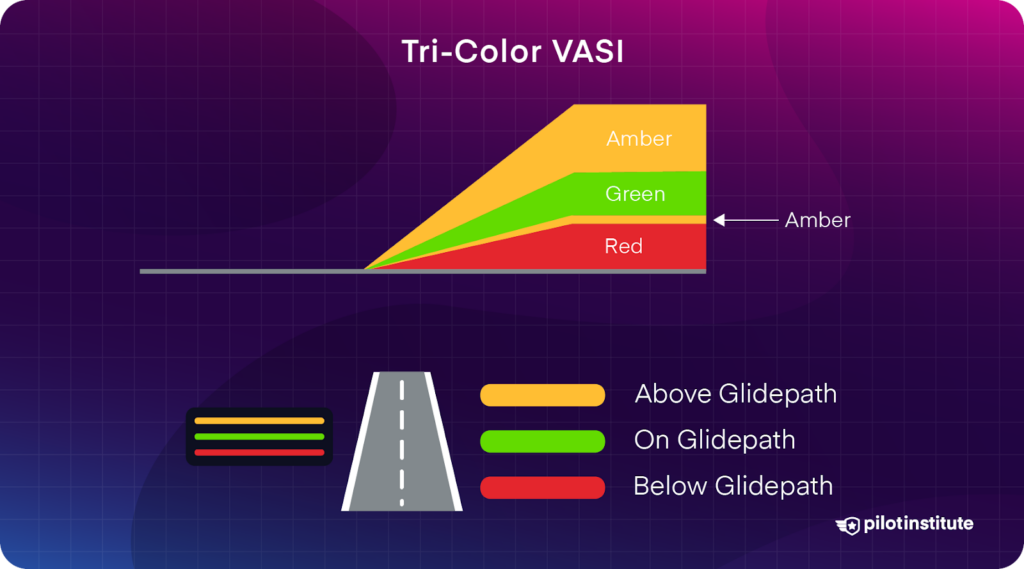
The Tricolor VASI is a simple system that helps you land using a single light unit with three colors—red, green, and amber—to show if you’re on the right path. The color you see changes based on your altitude as you approach the runway:
- Red – you’re too low and need to climb.
- Green – you’re on the correct glide path and should continue.
- Amber – you’re too high and should descend slightly.
Note that you’ll see a small area of dark amber when descending below the glide path. Be careful not to mistake this area for an “above glide path” indication.
The tri-color system is often used at smaller airports because it’s compact and easier to set up than more complex systems like the two-bar or three-bar VASI.
While it’s simpler and cheaper, the tri-color VASI gives you less detailed information than the two-bar or three-bar systems. It only tells you if you’re generally too high, too low, or on the right path.
The color change between amber and green can also be hard to spot in certain lighting or when you’re not approaching directly, which might make it less reliable in tricky landings or at busier airports.
What Is PAPI?
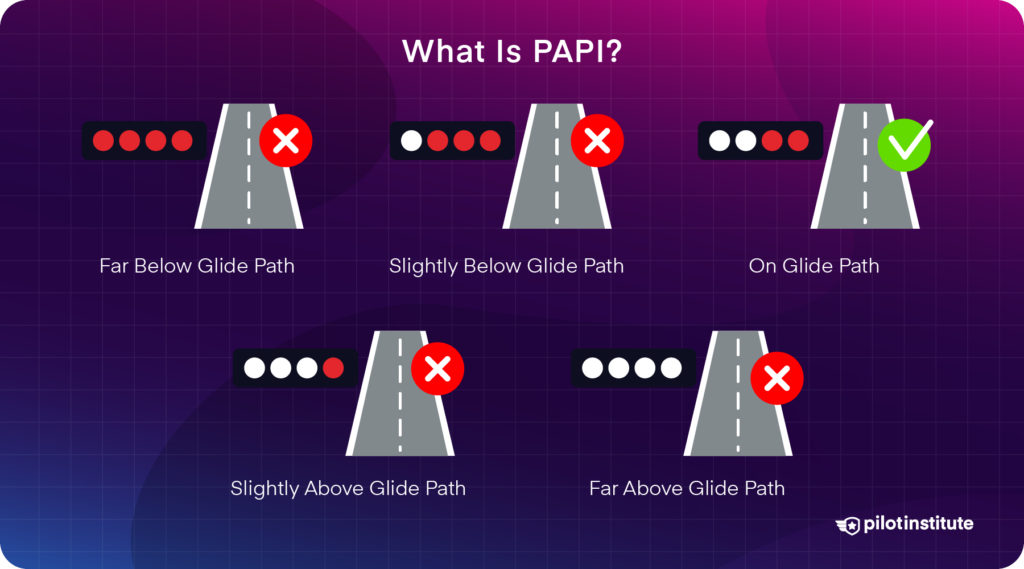
The Precision Approach Path Indicator (PAPI) is another VGSI used at airports to help you land safely. Like the VASI, PAPI enables you to know if you are too high, too low, or just right when approaching a runway.
These lights are visible from about 5 miles during the day and up to 20 miles at night. The PAPI provides safe obstruction clearance within plus or minus 10 degrees of the extended runway centerline and 3.4 nautical miles from the runway threshold.
PAPI is usually placed on the left side of the runway and consists of two or four light units arranged in a row. Depending on the height of your aircraft relative to the ideal approach path, these lights can appear either red or white.
So, how can you know if you’re on the proper glide path? Here’s how it will look on a four-light PAPI:
- If you see four white lights, it means that you are too high.
- If you see three white lights and one red light, you are slightly high.
- If you see two white and two red lights, you are on the glide path.
- If you see one white light and three red lights, you are slightly low.
- If you see four red lights, it means that you are too low.
The main principle here is that the higher you fly, the more white lights you’ll see. Conversely, the lower you fly, the more red lights you’ll see. You should always aim for the perfect balance of two white and two red lights on your approach.
The Differences Between VASI and PAPI
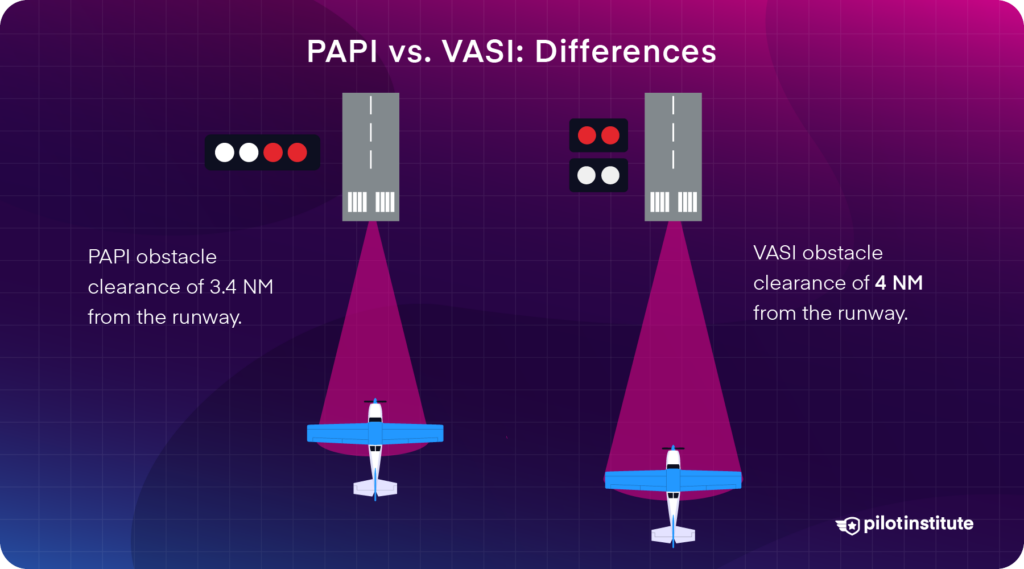
While the VASI and PAPI are both extremely useful approaches, what sets them apart?
The first and obvious difference is that they have different light configurations and indications. While PAPI uses four lights in a single row, VASI typically uses two or four sets of lights arranged in rows.
This configuration makes the VASI simpler and easier to understand. With only two sets of lights, you can quickly determine your height. VASI systems also are typically cheaper to install and maintain than more advanced systems like PAPI.
VASI provides a more extensive range of obstacle clearance at 4 nautical miles from the runway threshold. On the other hand, PAPI only covers around 3.4 nautical miles.
Some VASI systems also cover larger approach angles, which is helpful for wide runways or when varied glide paths are needed for different aircraft.
But for all of VASI’s strengths, it still cannot match the precision of a PAPI. VASI can only give you three status readings: too high, on the glide, and too low.
On the other hand, PAPI can provide five: too high, slightly high, on the glide, slightly low, and too low. These additional distinctions are incredibly critical, especially when you’re on short final.
Due to its precision and flexibility, PAPI is becoming the standard at many airports, and it’s slowly replacing the VASI in runways around the country.
Under the current procurement contract, the FAA can acquire up to 500 new PAPI units. These systems will be equipped with the latest LED technology, which requires less energy for the same light output while extending the lamps’ lifespan.
Similarities Between VASI and PAPI
At the end of the day, however, both systems were made for the same purpose. No matter if you’re flying a large jet or a small aircraft, PAPI and VASI are meant to enhance safety, especially when landing in poor visibility or at night.
Both systems ensure a standard glide path angle, typically around 3 degrees, which is the optimal angle for a safe landing. They both help you avoid obstacles and ensure that you approach the runway at the correct angle to land smoothly.
The VASI and PAPI also use a series of static lenses and color filters that appear to change between red and white depending on your height.
Both systems work without needing complex electronics in your airplane. They’re entirely visual, so as long as you can see the lights with your eyes, you can use them in your approach.
Lastly, the VASI and PAPI are used at airports worldwide, so no matter where you are, you can rely on them to help you land safely.
When to Use Each System
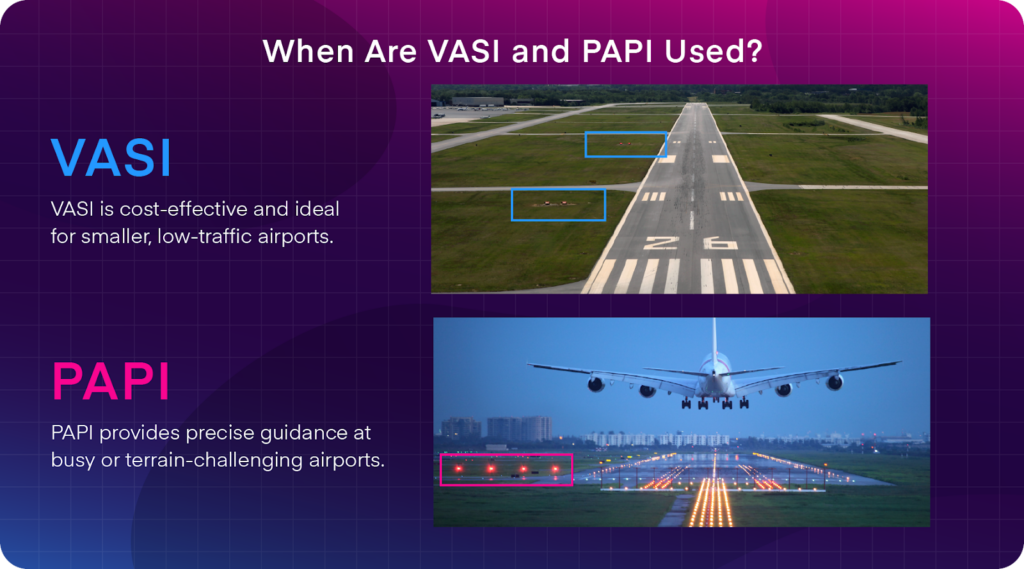
So, when is the best time to use either VASI or PAPI?
When to Use VASI
Well, because VASI is cost-effective and practical, it is often preferred at smaller airports with lower traffic or limited budgets.
For instance, a rural airstrip or regional airport might use VASI since it provides basic but effective guidance without the need for the precision of a PAPI.
VASI is also suitable for runways with longer or multiple glide paths, like those for both small airplanes and large jets. The flexibility of the three-bar VASI makes it useful for a variety of aircraft.
Also, airports that lack sophisticated precision landing systems, such as non-precision instrument runways, rely on VASI to guide visual landings. This is primarily the case in locations where installing more advanced systems isn’t feasible.
VASI is also common at flight training schools since its straightforward approach helps student pilots learn visual landings easily.
When to Use PAPI
PAPI is preferred at high-traffic airports or those serving larger aircraft, such as international hubs. Airports like JFK or LAX, which handle heavy jets and require greater precision, use PAPI to give pilots detailed visual feedback during their approach.
PAPI is also favored at airports with obstacles or challenging terrain. In Innsbruck Airport, for example, the precision of PAPI helps pilots navigate safely around mountains or buildings.
Airports with precision instrument landing systems (ILS), like Heathrow, often pair PAPI with ILS to provide pilots with extra visual confirmation during approaches, especially in bad weather or at night.
In poor weather conditions or nighttime operations, airports like Anchorage Airport in Alaska rely on PAPI for its more detailed guidance, which is critical for safe landings in low visibility.
Additionally, mixed-traffic airports that serve both small and large aircraft, such as San Diego International Airport, benefit from PAPI’s finer guidance, which helps different aircraft sizes land safely.
Finally, at airports with short final approaches, like London City Airport, PAPI is preferred for its ability to give precise feedback, helping pilots manage steep or short descents.
Conclusion
VASI and PAPI lights help you with your landings. VASI uses lights to show if you’re too high or low. PAPI gives a more precise visual cue for the correct approach angle.
Knowing the differences between these systems can help you adapt to different airports. It will also improve your approach accuracy. So, next time you land, use this knowledge and enjoy a more controlled descent.
Safe landings!
